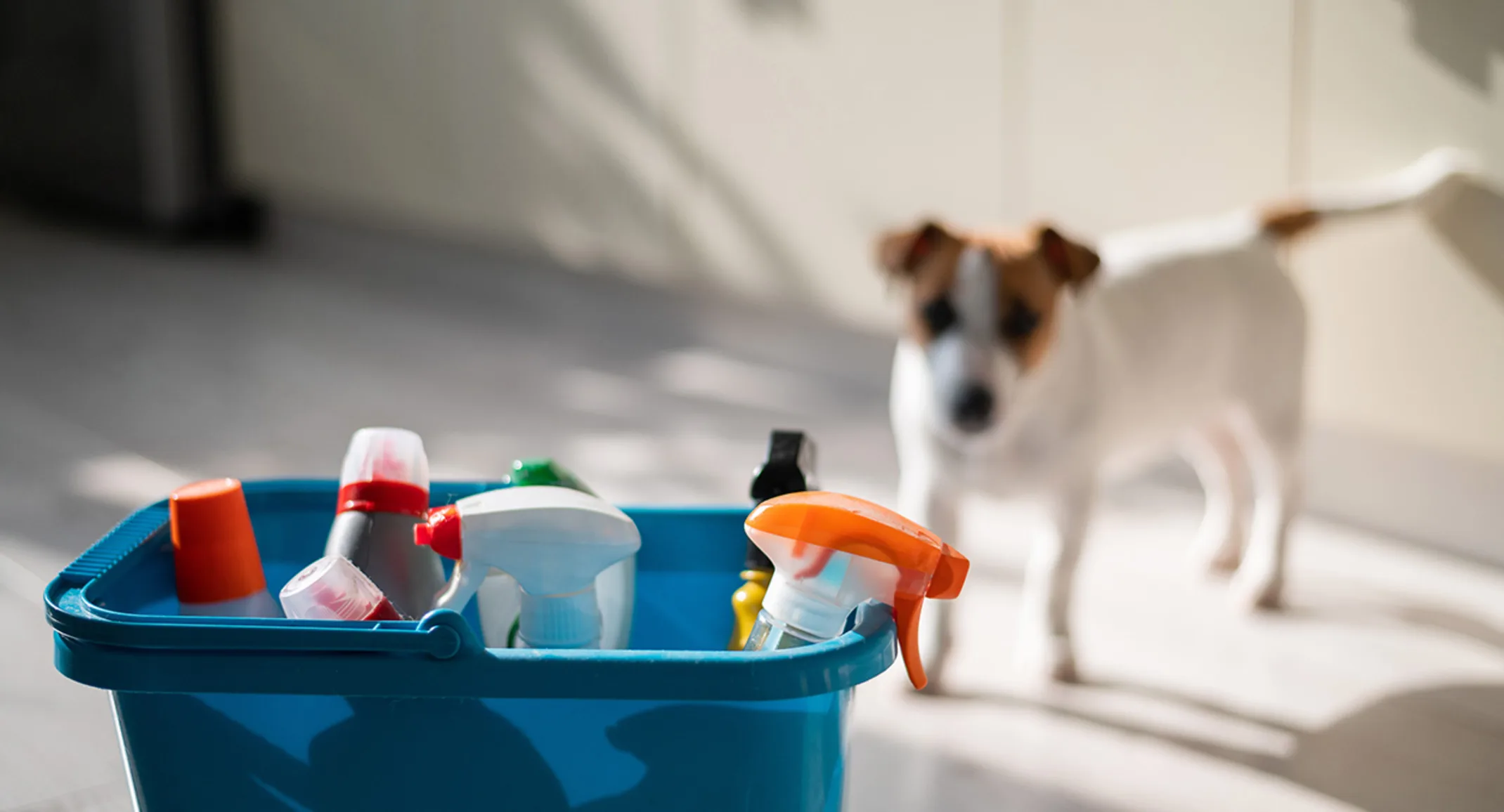How to Keep Spring Cleaning Safe for Pets
Tips and Tricks

As the winter season winds down, you may find yourself daydreaming about warmer days and a new start—and what better way to welcome the new season than a thorough spring cleaning? This annual cleaning overhaul is a common family tradition for many, signaling a physical and mental refresh to ensure your home is organized, sanitized, and aesthetically pleasing. While you may be itching to get started on your spring cleaning, as a pet owner, you should keep in mind some important guidelines. Follow these tips to ensure you accomplish your spring cleaning while keeping your pet’s safety in mind.
Avoid using cleaning products that can be toxic to your pet
You may be tempted to try all the newest cleaning products that boast their ability to cut through tough stains and leave surfaces shining. But, many cleaning products on the market today include chemicals that can be harmful—and potentially toxic—to your pet. Before purchasing a cleaning product, check the label for the following pet-toxic ingredients:
Ammonia
Chlorine
Bleach
Alcohol
Phenols
Formaldehyde
Quaternary ammonium
Phthalates
Hydrogen peroxide
Read product labels for warnings to ensure your pet’s safety
In addition to cleaning products that have toxic ingredients, avoid those with hazard warnings, such as danger, warning, caution, or use in a well-ventilated area. Purchase products that specify they can be used safely around pets. If you’re ever in doubt about whether a product is pet-safe, visit the manufacturer’s website, or contact a customer service representative to verify.
Products containing essential oils are hazardous to your pet
Watch out for cleaning products that contain essential oils. Many essential oils, such as eucalyptus, tea tree, cinnamon, citrus, peppermint, pine, wintergreen, and ylang ylang, are toxic to pets. If your dog comes in contact with some of these oils, they may experience toxicity. However, cats are much more sensitive to essential oils, and can develop problems from simply inhaling them.
Keep your pet out of the room when using cleaning products
If you do use a cleaning product that is not pet-safe, keep your pet far away from the area you are cleaning. To reduce your pet’s likelihood of experiencing toxicity or adverse effects, rinse and dry the area thoroughly before allowing your pet access, and ventilate the area well for several hours.
Keep cleaning products out of your pet’s reach
Pets can be curious, and some cleaning products’ aroma may entice them. Ensure you store all cleaning products securely in cabinets, out of your pet’s reach.
Deep clean carpets and upholstery to keep your pet healthy
For your and your pet’s health and safety, regularly vacuum carpeting and upholstery to reduce pet hair, dirt, and dust accumulation, and to rid your house of any external parasites that may have hitched a ride in on your pet. Fleas love to hide in carpets and under furniture cushions, so try to reach every nook and cranny when vacuuming. In addition, deep clean your carpets and upholstery at least once per year. Whether you hire a professional or do the cleaning yourself, remove your pet from the house first, and wait until deep cleaned areas are completely dry before letting your pet back inside.
Wash your pet’s bedding and toys
Use your washing machine’s hot water cycle to launder your pet’s bedding, clothing, blankets, and soft toys. Most of your pet’s rubber toys can be washed in the dishwasher, but if you aren’t sure if an item is dishwasher safe, hand-wash the toys.
Avoid common pet hazards when gardening
In addition to giving your home’s interior a spring makeover, you likely spruce up your yard after a long, bleak winter. Springtime ushers in a new season of yard work and gardening, and, unfortunately, potential pet toxins. Before you dirty your hands in the garden, consider protecting your pet from these dangerous plants and chemicals:
Plant with your pet in mind — Plants add beauty to any garden. However, always keep in mind that your pet should stay away from these harmful garden plants, including:
Lilies
Daffodils
Crocus
Sago palms
Tulips
Hyacinths
Irises
Before planting your garden, visit the ASPCA’s Poisonous Plant Guide for a full searchable list of plants that are toxic to pets. To ensure your pet’s garden safety, avoid adding pet-toxic plants.
Keep pets away when using fertilizers — Lawn and garden fertilizers contain many ingredients that can be harmful to your pet, particularly if your four-legged friend ingests these poisons. If your pet has ingested toxic fertilizer, their signs may include:
Excessive drooling
Vomiting
Discolored gums
Difficulty breathing
Abdominal pain
Liver and pancreas inflammation
Cardiac arrest
To protect your pet from poisonous fertilizers, choose pet-safe products, and keep your four-legged friend off recently (i.e., within one to three days) fertilized areas before letting them roam these spaces again.
Choose pet-safe pest deterrents — Insects and rodents can wreak havoc on your carefully designed flower beds or vegetable garden, but many commercial pesticides are extremely toxic to pets. Never place the following products where your pet can access them:
Mole baits
Rodenticides
Slug baits
Organophosphate-based pesticides
Pets add a new responsibility level to spring cleaning. So, take precautions to keep your pet safe.
However, if your pet does experience a spring cleaning emergency, use this locator tool to find a veterinary clinic near you. If you suspect your pet has ingested a toxin, immediately contact the Pet Poison Helpline or your nearest emergency veterinary hospital.
